All About Watering Potatoes
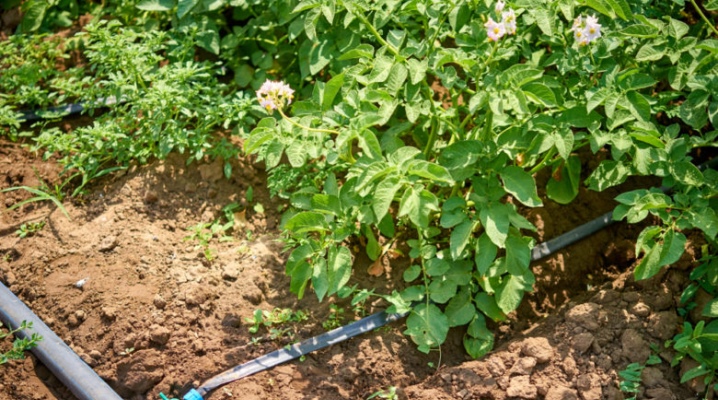
Many summer residents grow potatoes in their gardens. In order to harvest a rich harvest at the end of the season, the plant must be provided with quality care. Particular attention must be paid to watering, since no plant can do without it. Read below about how to properly water potatoes in the open field and why you need to do this.
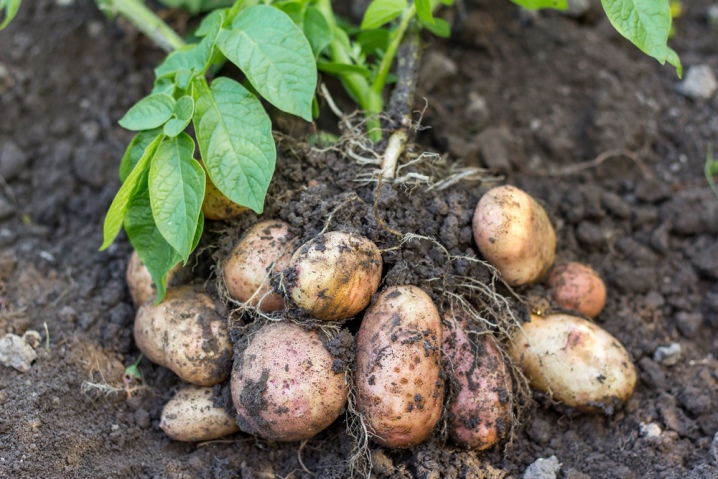
Do I need to water and why?
Watering the potatoes is necessary, it is quite sensitive to moisture and its sharp changes. This is due to the root system of the plant. Potatoes have strong roots, but they can penetrate a maximum of 30 centimeters into the soil. Because of this, the plant cannot provide itself with the necessary amount of moisture. If the soil is moistened by about 5-7 centimeters in depth, then you don't have to worry about the plant as a whole.
For the most part, a plant can get the necessary liquid during rain, but if it is not there for a long time and is not expected, and the weather is dry, then watering is of great importance. This applies to all varieties of potatoes: both early and later. However, overdoing it with water, of course, is not worth it. The soil should not be dry, but excess moisture can only harm the potatoes.
In order to know for sure whether you are watering correctly, it is recommended to pay attention to the condition of the bushes.
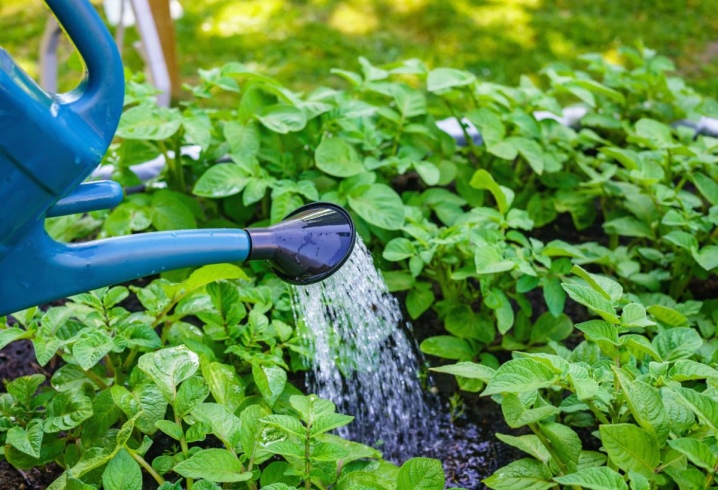
So, if you make mistakes when watering, it will affect the appearance of the plant. If there is a lack of water, then the potato bush begins to noticeably slow down in growth, and its leaves brighten and fall. At the same time, the plant does not bloom, its buds do not open, and the stem begins to dry out and weaken. If the potato stops growing due to drought, then in the future, having received the required amount of water, it may not continue to develop further. This can result in the potato tubers looking uneven and more likely to be deformed.
This is not the case with excess water. However, such a situation cannot be allowed, since it is fraught with rotting tubers and infection of the plant with various fungal diseases. To understand that you are giving too much water to the potatoes, you must first pay attention to the foliage of the plant. It becomes watery, and the lower part of the leaves, which is located near the ground, may begin to darken, and spots appear near the stem. You can also observe the active spread of fungal infection.
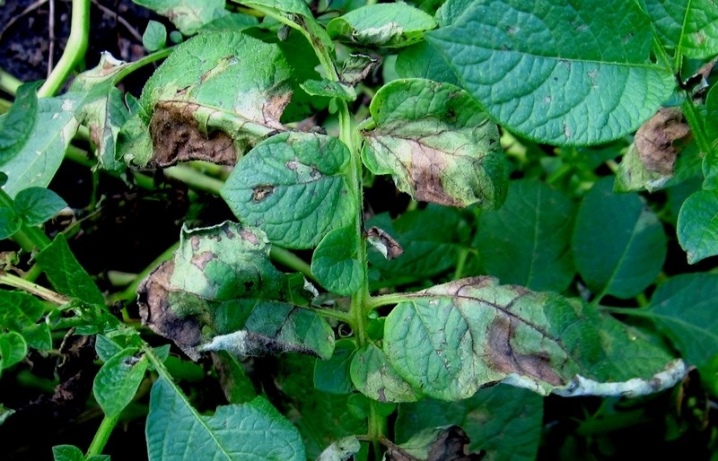
In general, potatoes may seem like a completely dry fruit, but they have rich greens that need to be supplied with water to ensure that processes such as metabolism and photosynthesis are going well. Besides, tubers, which at first glance seem dry, also need moisture. They contain a lot of juice. With a lack of water, the tops of a plant, which is very fond of water, begins to pull the nutrients it needs from the roots, which subsequently makes the tubers small and wilted.
In general, certain potato varieties can grow well without proper watering in dry soil. Information about this must be specified for each variety separately. In this case, one must take into account the local climatic conditions in summer, the condition of the soil and the abundance of precipitation.
If necessary, you can resort to mulching the soil using straw for this, which will help keep moisture in the soil. In addition, if rains are often observed in your area, in this case, you can do only by loosening the soil without watering. All you need to do is mix wet and dry soil so that it is soaked properly.
Loosening promotes aeration of the soil, and also allows the roots of the plant to extract the necessary nutrients from the ground.
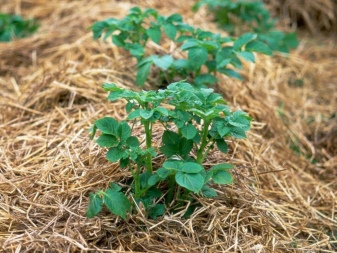

Timing
After planting potatoes, watering is not necessary, since usually at this time the soil is still saturated with moisture remaining after the cold weather. So, you can forget about watering a plant until its seedlings grow 10 centimeters. When the green mass begins to grow actively, then you need to start watering.
It should be borne in mind that moisture is especially important for the plant during the growing season, which begins 2 weeks after planting, as well as during the formation of the first inflorescences, when the appearance of tubers, and when the potato mass grows.
After 5 weeks after the first sprouts began to appear, the potatoes begin to feel a lack of moisture, which is needed to strengthen the roots, form buds and fruits. Particular attention should be paid to watering the plant during the flowering period. At this time, the potatoes will actively consume liquid. So, for each potato bush, it can take from 4 to 12 liters of liquid - the figure depends only on the climatic features of your region and the weather conditions in it.
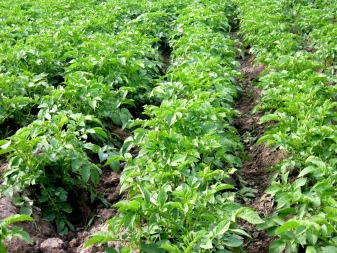
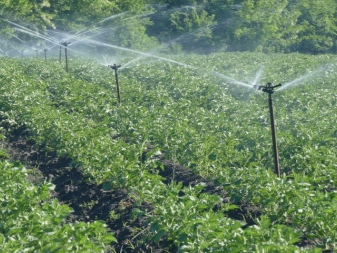
Frequency
The frequency of watering and their rate depend solely on the weather conditions and climate characteristics of the region. Often, only one watering is required at intervals of 10 days, and only 8-12 liters of water will be enough. If there is a drought, then the amount of liquid should be increased, but do not overdo it, otherwise there is a risk of flooding the plant too much.
In the phase of tuber formation, under favorable conditions, the amount of water is increased by a couple of liters, and watering is carried out at a frequency of 1-2 times a week.
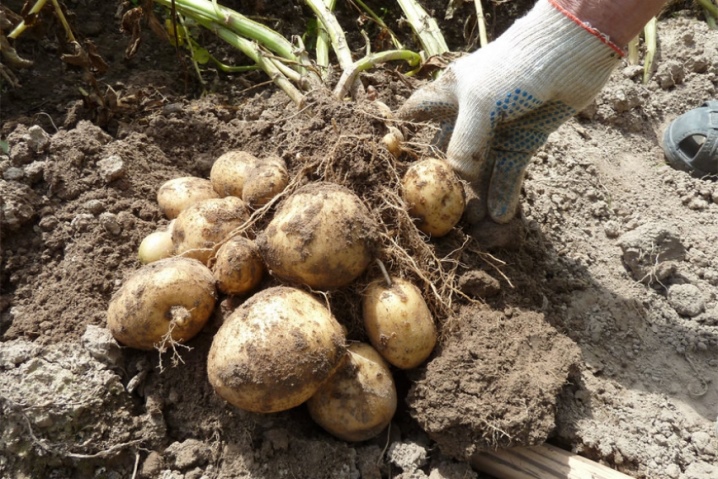
In a particularly hot and dry time, in the absence of rain, watering should be given special attention. It is necessary to water more often during such periods, since water evaporates several times faster in heat. Sometimes one watering is enough at a frequency of 5 days, but in some cases it is necessary to water more often - in order not to overdo it with water, look at the ground: its top layer must be saturated with liquid. In this case, watering is carried out either in the evening or in the morning.
Separately, it should be said about early potatoes, which require special conditions. Such varieties grow more actively, and the lack of water affects them destructively. Watering such potatoes is required more often, but the amount of liquid must be reduced. For more effective care, it is necessary to resort to the use of fertilizing so that the plant receives all the nutrients it needs.
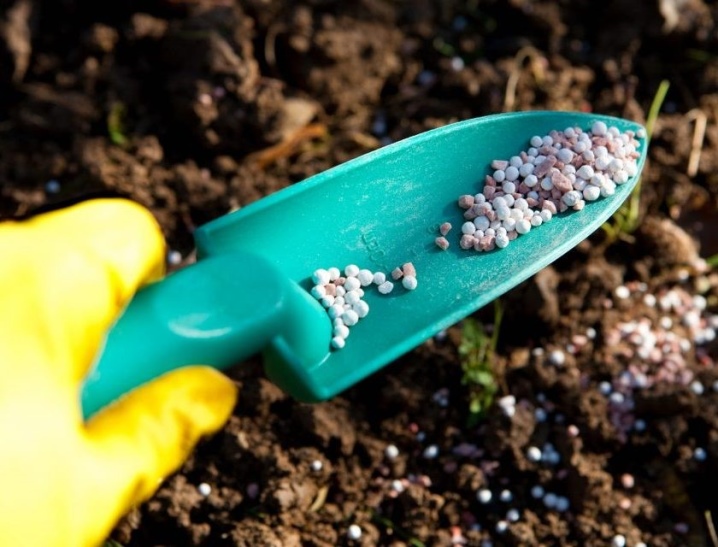
What should be the water?
When watering potatoes, consider the temperature of the water. It cannot be taken immediately cold from the well, as this will further affect the resistance of the potato to various diseases.
Before watering, it is usually collected in a container in advance and left in the sun to warm up.
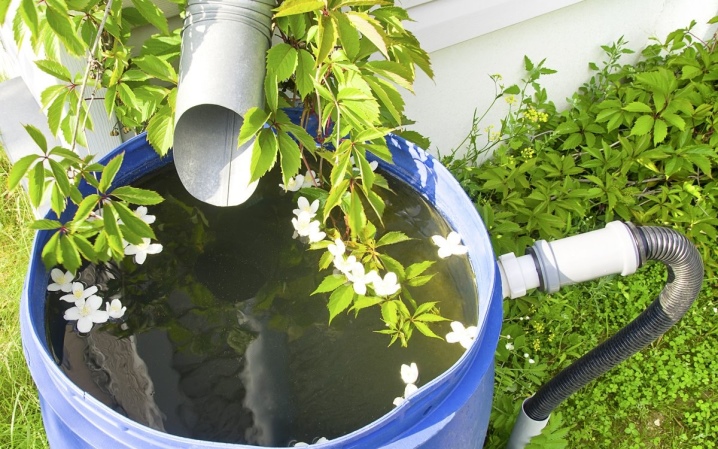
Overview of methods
Grooves
This method is used most often in the middle phase of growth until the end of fruit formation. It involves filling deep channels with water - the furrows that are located between the potato beds, and blocking the entrances to prevent water from spilling over the entire site. After a few days after this, the soil must be loosened in eroded places. The only drawback of this method is a rather high water consumption. However, with such watering, you can not be afraid that the plant will lack moisture.
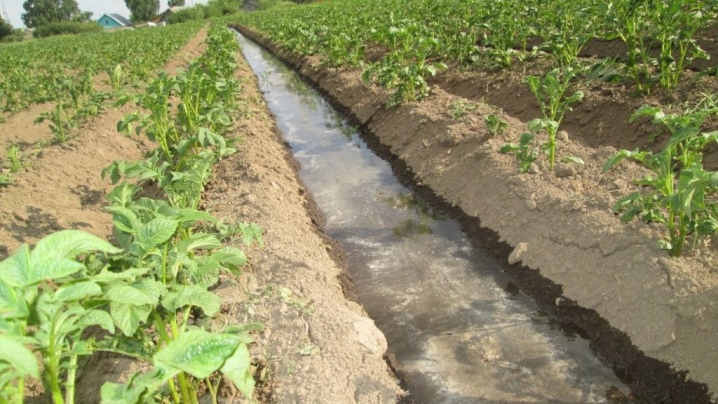
Root
This irrigation method can be classified as a classic one. It is most suitable for small areas planted with potatoes.This method allows the summer resident to control the amount of water for each bush with his own hands in order to give him the right amount of moisture. It involves watering the plant at the root with a hose or watering can. In this case, you need to try to do so that water does not fall on the leaves.
In large gardens, such watering is rarely used.
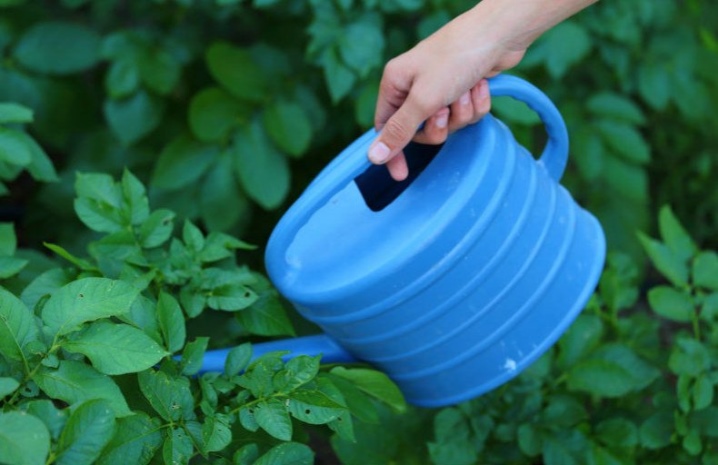
Spraying and drops
Drip irrigation from above helps to significantly save water, it is considered one of the most practical and at the same time natural. For such irrigation, a weak stream of water is used, a special pump and a sprinkler that helps to disperse the water. It is best to adjust the "rain" of medium intensity with small drops - for this, a spray with a hole diameter of no more than 1-1.5 mm is ideal. Large droplets and a strong pressure of water can contribute to the penetration of delicate leaf plates.
Sprinkling does not wash out the soil and does not harm the planting roots. With such irrigation, it is important to pay attention to loosening the soil, otherwise in the future there is a risk of developing fungus and various diseases, which will lead to a decrease in the amount of harvest.
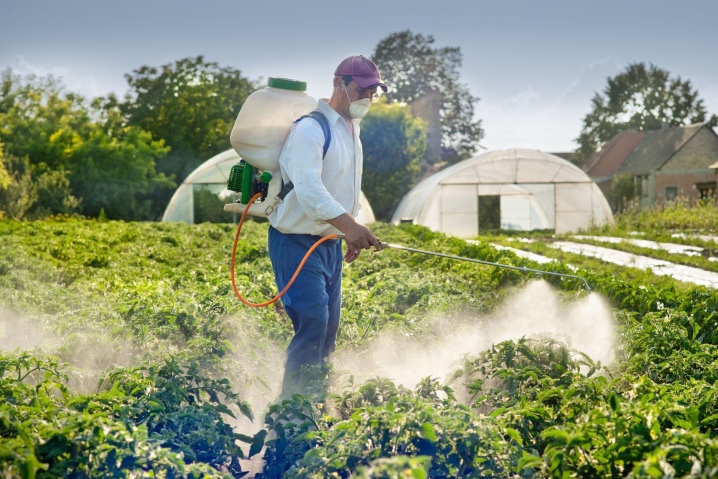
Dry
This method implies constant loosening and hilling of the soil, which makes it possible to increase its aeration and saturate it with air. In addition, loosening has a beneficial effect on the roots of the planting and improves its condition in general.
Usually, the beds are spud after the first watering, then covering the overgrown part of the plant with soil. This must be done three times before flowering begins. At the end of this phase, it is necessary to loosen the soil between the rows, while being careful not to harm the forming tubers.
It is not recommended to stop moistening the soil with dry irrigation. This method is, rather, an addition to the care and contributes to the appearance of a good harvest.
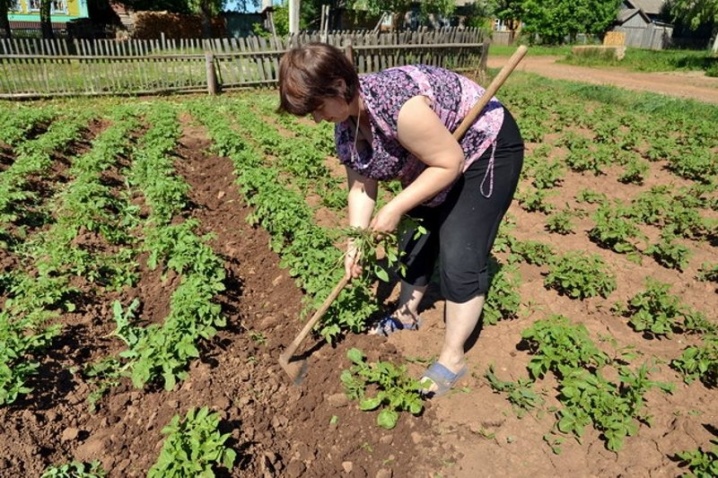
How to water properly at different stages?
After landing
The first time after you have planted potatoes, it is not required to water it, especially if you planted it in moist soil. But further, when a plant begins to develop and buds form, it begins to demand moisture. Watering is necessary immediately after the seedlings reach about 10 centimeters in height. Usually, the first watering of potatoes occurs about a month after planting, that is, around the beginning of June. At the same time, it is recommended to combine top dressing with the first watering in order to supply the young plant with the necessary nutrients and strengthen it, which will contribute to an increase in immunity and resistance to attacks of various harmful insects.

During and after flowering
The appearance of buds indicates that tubers began to appear and form in the potato. Usually, by this time, the ground part of the plant should be fully formed, and at the same time the evaporating surface of the foliage should also increase, which is why the plant needs more moisture. If there is heavy rainfall in your area, then you should not worry; otherwise, great attention should be paid to watering. In normal, non-dry times, about 3 liters of water should go to one bush.
If the plant lacks moisture during the budding phase and tubers ripening, then eventually flowering may stop abruptly, and the entire potato crop will be small and outwardly deformed, due to the fact that the potato will spend all its resources on recruiting and maintaining the green mass ...
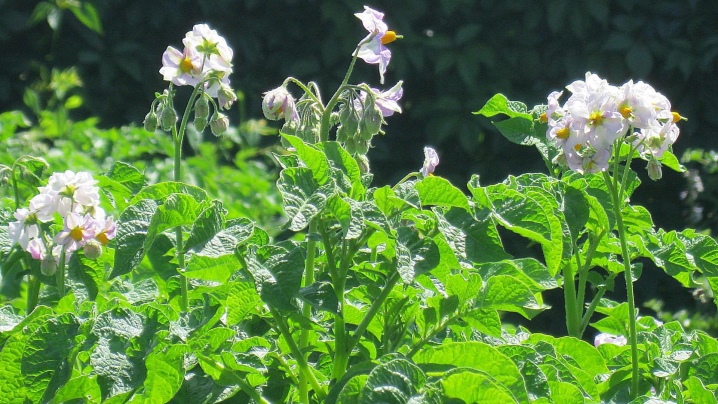
Please note that you should not allow excess moisture during this period either. Because of this, the formation of buds may stop, and the stems will fall. In this case, you need to stop supplying the planting with water, cut off its tops, which make up about a quarter of the entire length of the stem, and add ash to the soil, and then loosen it and huddle the bushes.
If we talk about dry periods, then the amount of water used for irrigation will have to be increased. In this case, it is recommended to cover the soil with mulch, using dried hay or straw for this.After collecting it, it is recommended not just to remove it, but to bury it in the ground, which will serve as an additional fertilizer for it.

After flowering, it is not recommended to water the bushes abundantly, since increased moisture can lead to the development of a disease such as late blight.
Top dressing during this period is also not required. Usually at this time, different chemicals are used to eliminate pests. Their use must be stopped at least two months before harvesting.
Watering the plant should be stopped about 2 weeks before harvest. The tops will begin to wither during this period, but you still cannot take up the watering can or the hose, since moisture at this time can contribute to the rotting of the fruits or their germination. When the green part of the potato dries up, you can start harvesting.
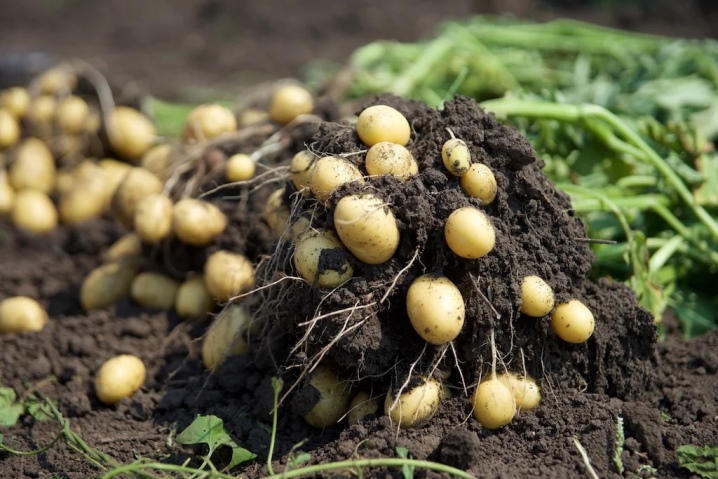













The comment was sent successfully.